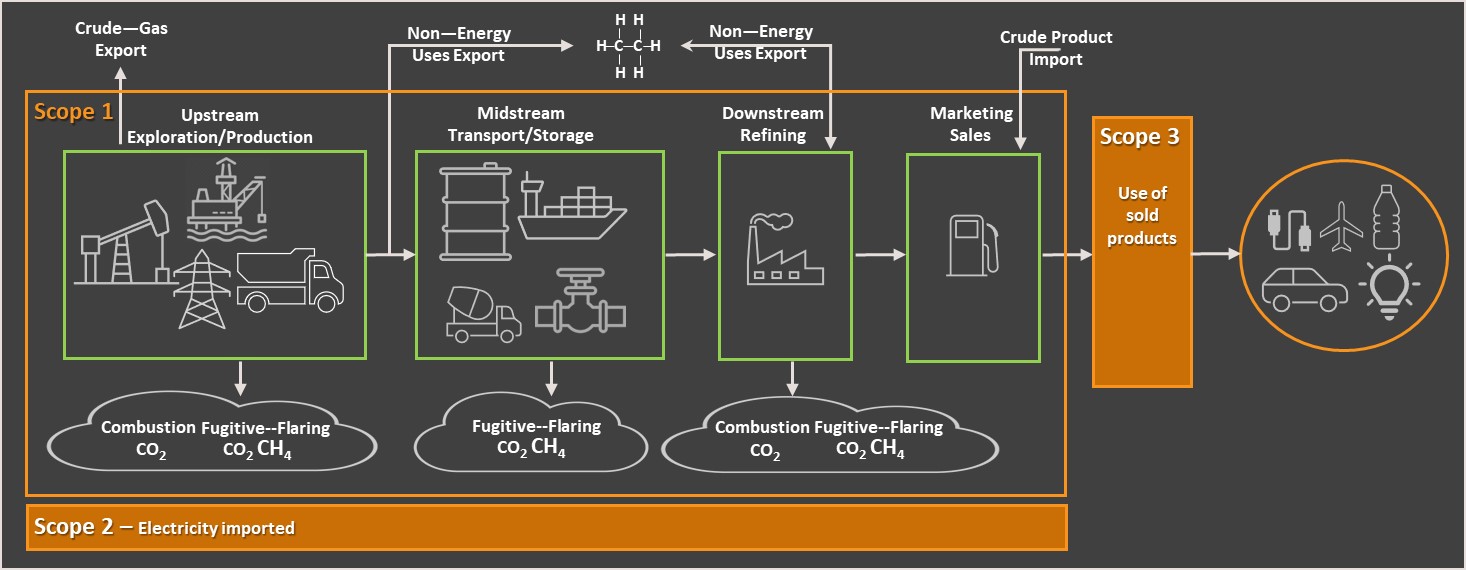GHG Emissions Consultancy
Decarbonize oil and gas operations, from field development plan to execution, whether offshore or onshore, by understanding customers ESG goals and developing roadmaps to help them reduce their own greenhouse gas (GHG) emission footprint.
Casius developed a holistic approach to emissions management helping customers in early identification, quantification and establishment of an emissions inventory baseline along with reduction scenario strategies and ultimately to set improvement targets based on in the emissions optimization portfolio and the feasibility to achieve them.
STEPS TOWARDS NET-ZERO
The Casius’ methodology to achieve Net Zero involves five (5) steps and adheres to Greenhouse Gas (GHG) Protocol developed by The World Resources Institute (WRI) and the World Business Council for Sustainable Development (WBCSD). The standard classifies GHG emissions as either direct or indirect based on three layers: Scope 1, 2 and 3.
- Scope 1 emissions are reported as “Direct GHG emissions” from oil and gas operations owned (partly or wholly) and / or operated by the company. It comes directly from drilling rig engines, methane leaks in the upstream or midstream phases of the production cycle, and emissions from ships used to transport oil or gas.
- Scope 2 emissions are reported as “Indirect GHG emissions” arise from the generation of energy purchased by owned (partly or wholly) and / or operated by the company, such as the generation of electricity taken from a grid to power auxiliary services, or the production of hydrogen purchased by a refinery from an external supplier.
The sum of scope 1 and scope 2 emissions is sometimes referred to as “well-to-tank” or “well-to-meter” emissions. They are accounted for in an organization’s GHG inventory because they are a result of the organization’s energy use. According to the GHG Corporate Protocol, all organizations should quantify scope 1 and 2 emissions when reporting and disclosing GHG emissions, while scope 3 emissions quantification is not required.
- Scope 3 emissions as “Other Indirect emissions”, which refer to GHG emissions related to your company’s value chain—upstream from our supply chain and downstream from our customers’ use of our products.
Furthermore, it adheres to the guidance of the EPA Environmental Protection Agency, Greenhouse Gas Reporting Program (GHGRP), of the United States.
The journey to achieve Net-Zero follows a methodology that involves five (5) steps.
Casius developed an emissions management methodology comprising activities of:
- Upstream : exploration, drilling and production.
- Midstream : pipelines, terminals, marine transportation, storage, and midstream service.
- Downstream : comprising refineries, retail outlets, natural gas distribution, and petrochemicals.
Since you are motivated to formulate a blueprint strategy to reduce your GHG emissions footprint framed in your Corporate ESG Responsibility contributing to the benefits of climate change, we are here to help you elaborate a comprehensive attempt at assessing your GHG inventory. Furthermore, identifying the top emissions contributors will allow you to plan and act accordingly to improve performance.


